|
United States : Kansas
5.6 miles (9.0 km) SE of Chetopa (Labette), Cherokee, KS, USA
Approx. altitude: 242 m
(793 ft)
([?] maps: Google MapQuest OpenStreetMap topo aerial ConfluenceNavigator)
Antipode: 37°S 85°E
Accuracy: 5 m (16 ft)
Quality:
Click on any of the images for the full-sized picture.
| 37°N 95°W (visit #4) |
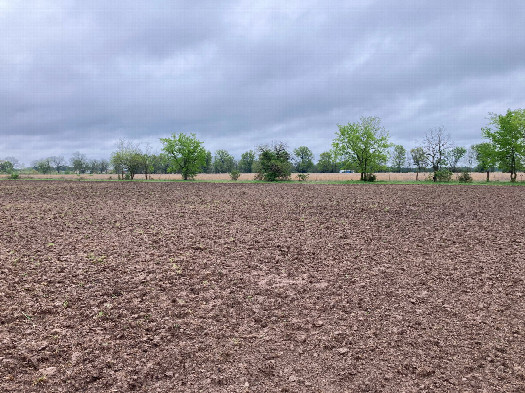 (visited by Michael G, Jack S and danielle c) 19-Apr-2025 -- Today we shared in the iconic tradition of making a springtime trip to Miami, with an obligatory visit to the nearest confluence (only 11 mi/18 km from the city; nitty-gritty details start two paragraphs down). I should immediately clarify that this is not the Miami most people are thinking of — we swung through Miami OK (pronounced my-am-uh), a mid-sized northeast Oklahoma town. Although the area's economy was built on lead and zinc mining and there were no beaches as far as I could tell, Miami is Miami all the same and we had a great time bumping Will Smith's homage to the city as we crossed downtown. (I'd like to think that the song is a staple of local high school dances or football games.) We continued north into the abandoned community of Picher OK, 9 mi/15 km east of 37N 95W. Picher was an important lead/zinc mining center in the early 20th century and this fact is evident from the large chat piles (mounds of mining waste contaminated with toxic metal) scattered throughout the site of the former town. We stopped by a small monument off US 69 near the center of Picher, worth checking out for extra history about the area (though quite sobering). The western boundary of the Tar Creek Superfund site is about 6 mi/10 km east of the confluence; the Superfund area is considered uninhabitable due to contamination from mining waste and has been in a process of cleanup for the last 40-odd years. Anyway... getting more on-topic: we hit Kansas and US 166 very shortly after departing Picher. Turning left onto the highway, we noticed that some of the taller chat piles were still visible between the trees (resembling small foothills in the distance). Following US 166 westbound for several minutes, we reached the confluence access road: SW 90th Street, a somewhat mushy dirt/gravel road thanks to rain earlier in the day. As with most confluences in the Southern Plains, the nearest highway was no more than a couple miles from the target point. Much appreciated today, since my car flashed a few 'low traction' alerts during our final in-car approach — it felt like driving on snow! We didn't recognize it at the time, but this was a good indicator of the mush that we'd soon traverse on-foot. Pulling the car into a limited area of grassy shoulder (and crossing my fingers that no kind passerbys would become concerned while we were off chasing GPS coordinates), we made our way to the open gate at the northeast corner of the confluence field. We were relieved to see that it was fallow, simply a tract of wet dirt today. A convenient farm track allowed us to cross due west along the north side of the field, maximizing walking distance off the mud. During this stretch of walking, our ears were treated to the sound of distant but incessant barking coming from the property to the north (and there had to have been at least several dogs); I wasn't too concerned, but still hoped that there were no gaps in the fence in case it was us they were riled up about. Once we'd gotten within 350 meters of the confluence, it was time to straight-line our way to all zeroes. Though it'd only rained about 0.6 inches (~15 mm) that day so far, we soon found that the dirt was holding a good bit of water — our shoes quickly became caked in mud as we trudged intently south-southwest. (Could've been a lot worse: it rained an additional 3.5 in/~90 mm during the following 24 hours. I'd guess the field was a true sludgy mess the next day.) During the mushy dirt trudge, a truck drove past our vehicle and the field's gate and visibly slowed down: I'll bet the sight of an empty car on the shoulder back here is a little unusual. Much to our relief, they moved on after a few moments. Don't know if they'd spotted us, although if they did, I'm sure we appeared to be perfectly average individuals on this chilly, wet afternoon. During the final hundred meters, we happened to cross some tire tracks that led almost directly to the confluence from the farm track (we'd somehow missed them on our way in). Probably a total coincidence, but as we discovered on our way back, it almost made a perfectly straight-line from the confluence to the gate. We arrived at 37N 95W to find (you guessed it) some wet dirt. No zero-dancing was necessary today, I think this might've been one of the quickest GPS all-zeroes I've achieved to date! This was Jack and I's third Kansas confluence and Danielle's first. As always, it was enjoyable looking around and taking in the spot's surroundings in the context of the day's conditions: a quiet, empty tract of dirt in far-southeast Kansas on a rainy April day, bounded by pleasantly green patches of trees and grass. It was unusually chilly for mid-April: the temperature had stalled out in the low 50s (11°C) under cloudy afternoon skies, and a light breeze made it feel even a tad cooler. The views were about what you'd expect, not terribly exciting, but not without anything to mention. Most interestingly, the Kansas/Oklahoma border was clearly demarcated by a tree line and barbed fence very close to the south. The previously mentioned tire tracks were visible in the north view, seemingly turning around not far from the confluence (so as to not disturb it, I guess). With pictures taken and satisfaction achieved, we made use of those same tire tracks for our northeastward retreat to the gate (another quarter mile in mostly firm mud). Shortly after reaching the road again, Jack spotted an orphaned chimney/fireplace sticking out of the grass on the corner across from the field's gate. On slightly closer inspection, we found the front step of a former house, as well as the tangled remnants of a chain-link fence on the perimeter of the parcel. Google Earth historical imagery suggests the building was standing as recently as 2013. An interesting exhibit for sure! We departed 37N 95W's vicinity en route to Chetopa KS (for some much-needed paper towels) before dropping back into Oklahoma — mission complete, and it'd been a fun one. |
| All pictures |
| #1: Looking southeast at 37N 95W, located in the foreground #2: Looking north from the confluence #3: Looking east #4: Looking south, at the KS/OK border #5: Looking west #6: Zeroes on the GPS! #7: Looking northeast up the straight-line vehicle track that led to the confluence #8: Abandoned building 500 meters northeast of 37N 95W ALL: All pictures on one page |


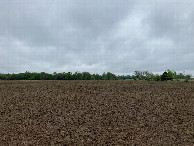
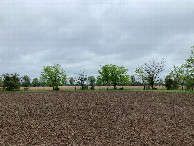
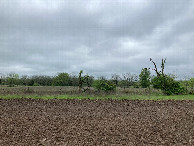
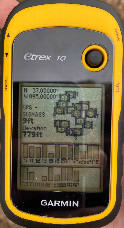
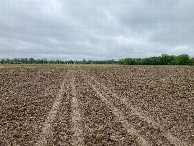
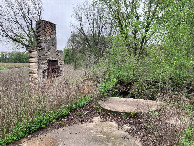
![Visit #5: [26-May-25] Visit #5: [26-May-25]](/us/ks/n37w095v5/preview.jpg)
![Visit #3: [05-Nov-21] Visit #3: [05-Nov-21]](/us/ks/n37w095v3/preview.jpg)
![Visit #2: [03-Apr-11] Visit #2: [03-Apr-11]](/us/ks/n37w095v2/preview.jpg)
![Visit #1: [19-May-01] Visit #1: [19-May-01]](/us/ks/n37w095/preview.jpg)